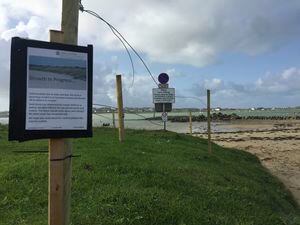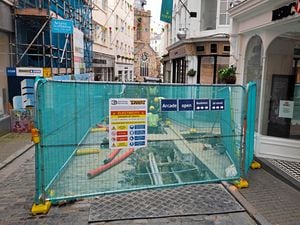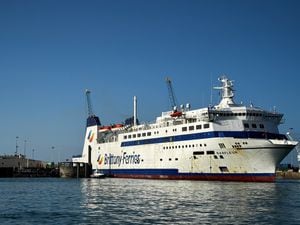Rare plant given a chance to grow at Les Amarreurs
A PLANT now rarely found in Guernsey is being allowed to grow without disturbance on the dunes at Les Amarreurs, Vale.

The 2018 Habitat Survey has shown that dune habitats have decreased by nine hectares since 2010, which has led Agriculture, Countryside and Land Management Services to increase efforts to protect sites where dune habitats still exist.
Sea stock, or Matthiola sinuata, was once a staple of dune habitats in the Channel Islands and the south of England but is becoming increasingly scarce.
So much so it has been given a Plantatt conservation status of vulnerable by the Biological Records Centre.
It states: ‘It [sea stock] was first recorded in Britain in 1633. It seems to have declined slowly over the historical period, but its overall distribution is currently stable. However, large populations often disappear for reasons that remain uncertain’.
Action has been taken by ACLMS to ensure the conservation of the sand dunes, which support the coast road running from the car park towards Grande Havre.
In August, ACLMS issued a notice for all kayaks and small boats to be removed from the stretch of dune by 13 September.
An ACLMS spokesperson said: ‘The aim of the work was to allow the worn grass behind the beach to regenerate. Dunes are an important natural sea defence and although robust against wind and weather, they are easily damaged if trampled. The improved covering of grass and other maritime plants here will help to bind and protect the sand and soil, reducing the loss of sand onto the footpath and road surface.’
Environment Guernsey was then contracted to cordon off the area to allow the vegetation to grow again.
‘Sea stock, which has a recognisable purple flower, is actually quite scarce on Guernsey and the dunes at Les Amarreurs is one of the best spots to find it growing,’ said Environment Guernsey’s Jamie Hooper.
‘If a boat is plonked on top of the vegetation and then left there for some time the vegetation will die off and leave the sand dunes liable to increased wind erosion. Sand dunes are naturally meant to move but it is about striking that balance. Particularly the proximity to the road and the path means that this thin stretch is important to conserve.’
As well as sea stock, Marram grass is the common plant species but interesting wild flowers like sea holly, yellow vetch and sea rocket can also be found in this type of habitat.
Dunes can support a host of species of grassland, wild flowers, butterflies and other insects, birds feeding on the seeds and an ecosystem that depends on this habitat.
Some species are specialists and will be found only in dune habitats, such as the silvery leafcutter bee.
An ACLMS spokesperson added: ‘The work, which has gone well, was co-ordinated by Agriculture, Countryside and Land Management Services who ensured all the boats were removed before fencing was put up by Environment Guernsey. Agriculture, Countryside and Land Management Services would like to thank all boat owners who removed their boats in order to allow for this to be done.’





